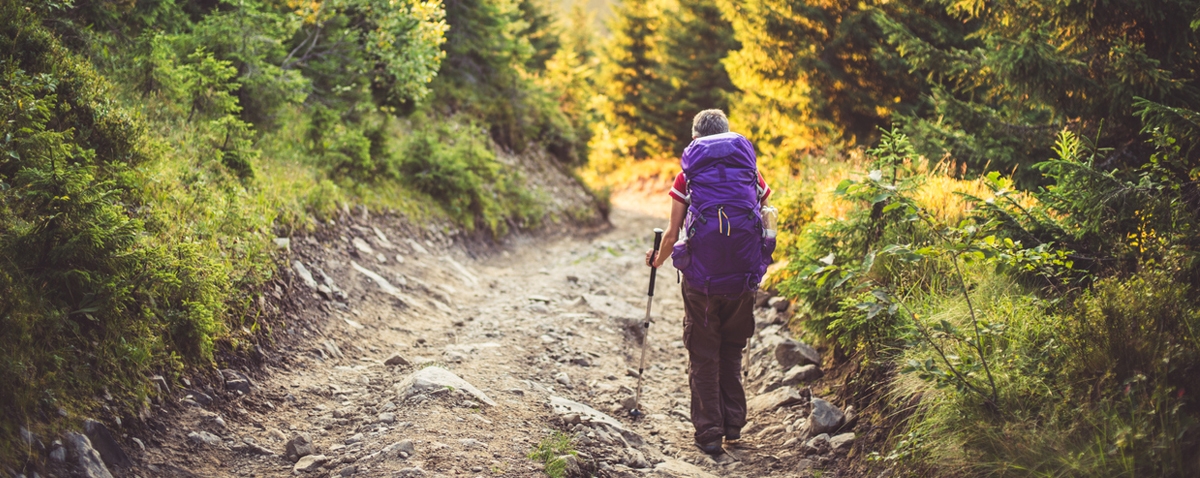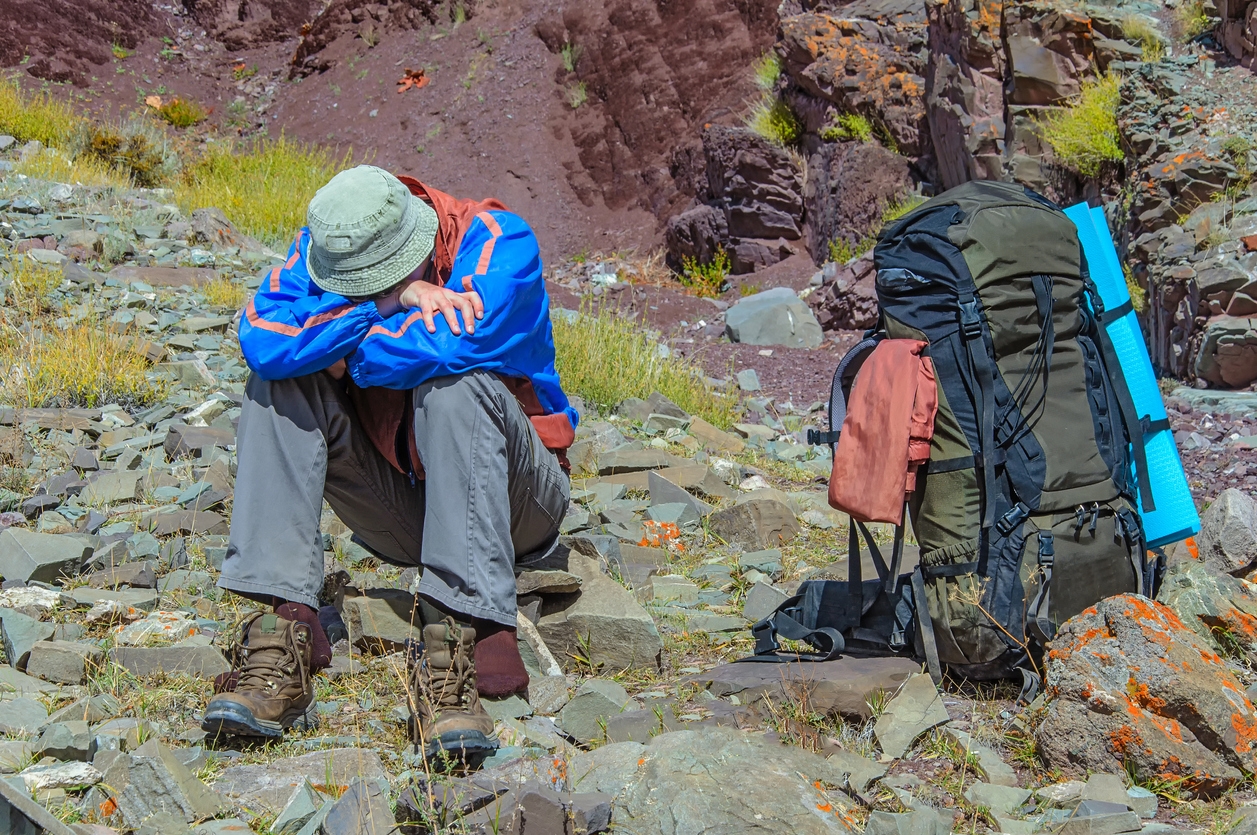The thrill of altitude, the challenge of surviving in low oxygen, and the dare to thrive up above somewhere in the mountains are all parts and parcels of mountaineering. For the potential adventure seekers, living in the mountains to escape the hustle and bustle of urban life seems fascinating yet bold but the fun facts about mountains are that they already provide habitat to around one-tenth of the population of the world as they cover one-fifth of the landscape of our earth. While the idea of living in high altitudes is exciting, it has its due share of challenges some can be easily overcome, while others are related to severe health issues that can arise as a result of living in areas of high altitude.
Things You Should Know If You Plan to Live on High Altitude:
It is commonly believed that people who reside in mountains or regions that are on height are healthier and have the capacity to bear extreme climatic conditions too. But though this might be a reality for some, those with even mild conditions related to the heart or the lungs should take precautionary measures before leaping to their hearts’ desires.
Interestingly, research argues and validates that living in the mountains can have excellent results for people suffering from heart-related issues, but safety should always be observed. [1]
But What Happen When Humans Try and Live on High Altitude?
The enchanting mountains covered with greenery during summer or snow during winter, with clouds low enough to be touched, this alluring scenic beauty can be very enticing when one plans to escape the chaos of city life. But what is not apparent is the hazard these mountains can cause to low landers. The fact that the level of oxygen deteriorates with every foot increase in height is often ignored by people, in fact, lack of awareness or proper guidance when it comes to traveling in mountains is the result of negligence. [2]
Before You Leave for the Mountains, Learn About Hypoxia:
Mountain climbers or tourists often feel stressed or they hyperventilate when at height, this is because of the lack of oxygen up high in the mountains. This limited availability of oxygen is known as Hypoxia and anyone who has a weak heart should be cautious when leaving for such adventures. Hypoxia can be experienced by anyone who has reached a height above sea level of 2500 meters. However, many would then wonder what causes so many people to easily survive and thrive at such elevations without getting any ailment. The world has enough evidence to prove that living at a height of over 2500 meters is a reality for many highlanders. In fact, some civilizations living in the mountains are as old as the mid-1400s. From the people living in the Himalayan mountain range to those who reside in the rough mountains of North America, people have been thriving without having any disease harming them, so what helps them to survive?
What Causes Hypoxia at High Altitude:
It is surprising the atmosphere everywhere, irrespective of the altitude, has the equivalent percentage of oxygen in it. An interesting fact about mountains is that the atmosphere’s density at height is less, that said, the oxygen molecules are not closely packed as in lowlands but are very scattered. [3] This causes different amounts of oxygen in the same air volume in highlands and lowlands, causing lower air pressure in mountains than on land slightly above sea level.
How Does Air Pressure Work:
In order to successfully plan ahead to head over to the mountains, ensure that you know the science behind the phenomena of air pressure and how it helps one in getting the sufficient amount of oxygen needed for the body to function well.
A 100 k Pa is normally the air pressure at sea level, making the air considerably dense with oxygen molecules. [4] At low levels, the lungs easily share the oxygen with the cell membrane from where it gets into the blood. The diffusion of oxygen becomes comparatively easier at sea level than at an elevation above 2500 meters. The reason for our bodies’ comfort at sea level is their adaptability to the level and its conditions as most people had been living over the land and not in the mountains most of their lives. As the body is not adapted to high altitude conditions such as low air pressure, it becomes difficult to take in an adequate amount of oxygen or thrive with low oxygen, resulting in all the health conditions related to low oxygen.
The Survival of the Fittest:
The human body is unique, not immediately, but with time it can adapt to the climatic conditions of different regions. But not everyone has the capacity or health conditions that their body can respond positively with time to the change in the environment.
If you already take heart medicines to keep your blood pressure in check, know that you cannot just opt to live in the mountains. Without proper guidance from your physician, such extreme lifestyle conditions can be fatal as well. As for the normal guidance, the air pressure above 2500 meters drops by 25% of what it actually is at sea level, and as one goes higher it keeps on dropping, so know what you are putting yourself in beforehand.
The Highlander Inhabitants
It is amazing how despite the harsh climatic conditions of mountainous terrains, the population in such regions is also increasing. In 2015, on the estimate, there had been more than 2.8 billion people living in high-altitude areas. [5] But what causes the highlanders to survive and be healthy in such regions?
When the elevation is more than 7500 meters above sea level, the people living on land can face extreme hypoxia and may even feel insomniac with nauseatic. When reaching above 8000 meters, the chances of death are evident as the air pressure is too low for humans to survive.
It is not surprising that one needs to have an oxygen cylinder when going on an Everest expedition as it is around 8848 meters high.
Can Those Living at Sea Level Thrive in Mountains?
Mountain living has its charm. With limited to no pollution at all, the idea of being near to nature and being away from fast-paced lives is too fascinating to entice one to quit the rigid and mechanical living of cities and find their solace in the mountains but is thriving possible in such extreme weather conditions?
The Himalayan Mountains have been home to many people, mainly people from Nepal, Bhutan, Tibet, Jammu and Kashmir, Uttarakhand, and Himachal. One of the most important Himalayan mountains facts is that the average height of the mountains is 6100 meters yet people thrive and in fact are very healthy compared to many living at sea level.
Thriving through Diet:
Unlike the lowlanders, the people living in mountainous areas have their whole lifestyle shaped around the climatic conditions of the region. From living in clay and stone homes with narrow corridors, and limited openings to wearing animal hide as their clothing, they have adapted well to their circumstances. The arid, cold, and windy conditions cause them to wear wool, which is easily available and keeps cold at bay. Docha thick woolen knee-high boots) and Pangden is their common attire. [6]
Clothing is not the only medium that makes their survival easier, their diet is equally significant. In order to keep their body warm, they drink a comforting tea made of ghee and tea leaves. Another meal that is a norm for them is the maize pudding called Dhindo. Besides these, the consumption of meat and potatoes is very essential for them as they work hard and require all the carbs and protein to thrive in the cold conditions.
What Happens When You Start Living at High Altitude:
If you are healthy and fit to start your life fresh in the mountains, know these cool facts about mountain living to plan accordingly. When one starts living in the mountains, initially, they will experience uneasiness, shortness of breath and even throw up at times. Hypoxia causes stress as the body finds it difficult to thrive with low oxygen intake. But with time one will observe the change in all these conditions.
The body has the capability to adapt to changes if a person is healthy. Those with heart or lung disease should not take the chance as their symptoms can get worse and can even damage their heart and brain if immediate assistance is not sought.
The Process of Acclimatization:
While the body will not respond immediately to changes of climatic alteration, with time one will experience less stress and be more accustomed to life. Basically, the body responds to low oxygen levels by producing more red blood cells, in fact, even blood vessels start to grow as well. The expansion of the heart ventricle and lungs further aid in taking in oxygen easily. [7]
Surviving the Mountains:
Now that you are sure to take a leap of faith here is a list of things that can help you in thriving in the mountains. Remember, a change is never easy but it always has its benefits.
1- Research well before deciding on your choice of region. Know that, unlike Tibetans, your body does not have the genes adapted to extreme conditions. They have been living in the high altitudes for thousands of years and their genetics have modified accordingly.
2- Prepare your body and health for drastic change by training rigorously. Get your blood test done and consult your doctors as well to be aware of your health shortfalls.
3- If you plan to go on an expedition, make sure you buy instead of getting the equipment on rent. It is because when buying you can choose the ones made for your body type. After all, it is an investment. [8]
4- Remember those who have been living in the mountains respect the region and mold their lives with respect to the environment. If you plan to shift or just for an adventure of a month, learn about the ethics required to live in the mountains.
5- Know your chances well by getting solid health and life insurance, even with all the preparations, you might find it difficult to thrive in the mountains, so get yourself well-equipped.
The Cool Facts About Mountains for First Timers
Though everyone who sees beautiful scenic mountains, longs to have an abode in high altitudes, be aware that behind those scenic beauty lurks many challenges, and while you can stay for a week or so, thriving and surviving in the mountain is not everyone’s cup of tea. Here are interesting facts about mountains that are thrilling yet scary as well.
- Tibetans have the capability to survive without oxygen in some regions of Everest? Their bodies have adapted well and their genes have mutated with respect to the climatic conditions as they had been the mountain dwellers for years. [9]
- The mountains of Qinling have unique pandas that have brown patches instead of the usual black ones. [10]
- Any land with a height of half a kilometer is called a mountain.
- Volcano Mauna Loa is 75 cubic kilometers, the bulkiest of all the mountains. [11]
- A mountain in the Himalayan by the name of Annapurna is one of the most dangerous climbs, uptil now more than 20% of the climbers did not make it alive on its expedition.
Conclusion:
You may have noticed that athletes go on a month or two-long vacation to mountainous regions before their sports or competitions. That is because when the body gets adapted to extreme living conditions, it makes it easier for them to compete at sea level or land. [12] Therefore, living in high altitudes have its advantages as well but one should be fully aware of the capabilities of their body and health before going forward with the challenging ways of living, after all, one’s health is the parameter to decide whether one can thrive or not in extreme weather conditions.
References
- 6.6 human responses to high altitude – Human biology. (2020, September 1). Human Biology – Simple Book Publishing. https://humanbiology.pressbooks.tru.ca/chapter/8-8-human-responses-to-high-altitude/
- 6.6 human responses to high altitude – Human biology. (2020, September 1). Human Biology – Simple Book Publishing. https://humanbiology.pressbooks.tru.ca/chapter/8-8-human-responses-to-high-altitude/
- Atmospheric pressure. (n.d.). Britannica Kids. https://kids.britannica.com/students/article/atmospheric-pressure/604037
- Harden, K. D. (n.d.). Thriving at altitude, Part 2: How life at altitude impacts people — and animals. News | SteamboatToday.com. https://www.steamboatpilot.com/news/thriving-at-altitude-part-2-how-life-at-altitude-impacts-people-and-animals/
- High altitude oxygenation – StatPearls – NCBI bookshelf. (2022, April 14). National Center for Biotechnology Information. https://www.ncbi.nlm.nih.gov/books/NBK539701/
- Nepal, P. A. (n.d.). Lifestyle of people in himalayan region. Pure Adventure Nepal Treks & Expeditions PVt.Ltd. https://www.pureadventurenepal.com/blog/lifestyle-of-people-in-himalayan-region
- Qin Ling mountains deciduous forests. (n.d.). One Earth. https://www.oneearth.org/ecoregions/qin-ling-mountains-deciduous-forests/
- Riley, A. (n.d.). How tibetans survive life on the ‘roof of the world’. BBCpage. https://www.bbc.com/future/article/20170227-how-tibetans-survive-life-on-the-roof-of-the-world
- Surviving the Himalayas. (2023, February 9). Himalayan Glacier. https://www.himalayanglacier.com/surviving-the-himalayas/
- Tarick. (2022, October 21). 15 interesting facts about mountains. Interesting facts. https://100-facts.com/interesting-facts-about-mountains/
- Turnbach, H. (2022, July 21). How many people actually live in the world’s mountains? GEO Mountains. https://www.geomountains.org/news-page-all/138-geo-mountains/2861-how-many-people-actually-live-in-the-world-s-mountains
- What happens to your body at high altitudes. (n.d.). Indiahikes – India’s Safest and Largest Trekking Organisation. https://indiahikes.com/blog/human-body-high-altitude#gref





